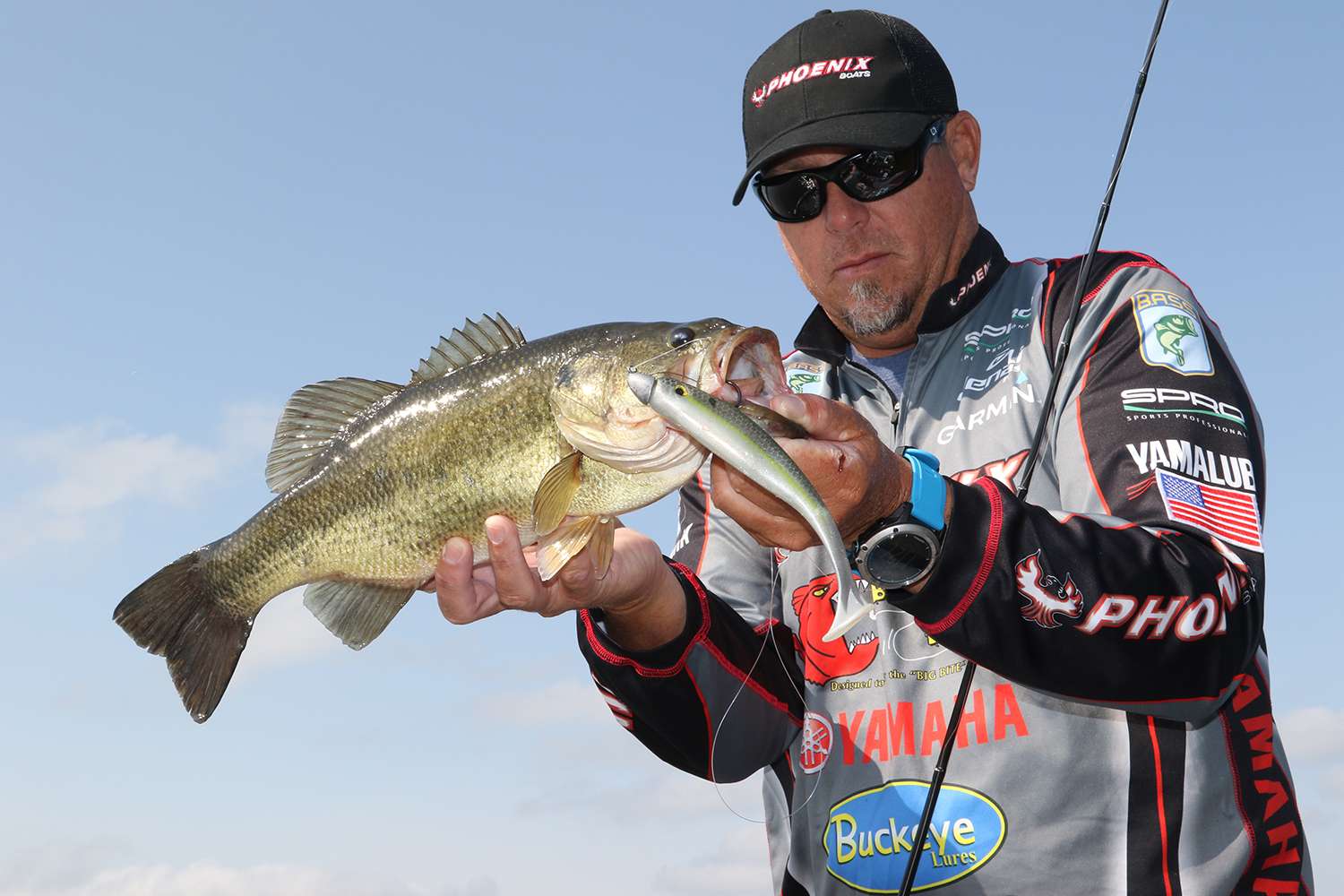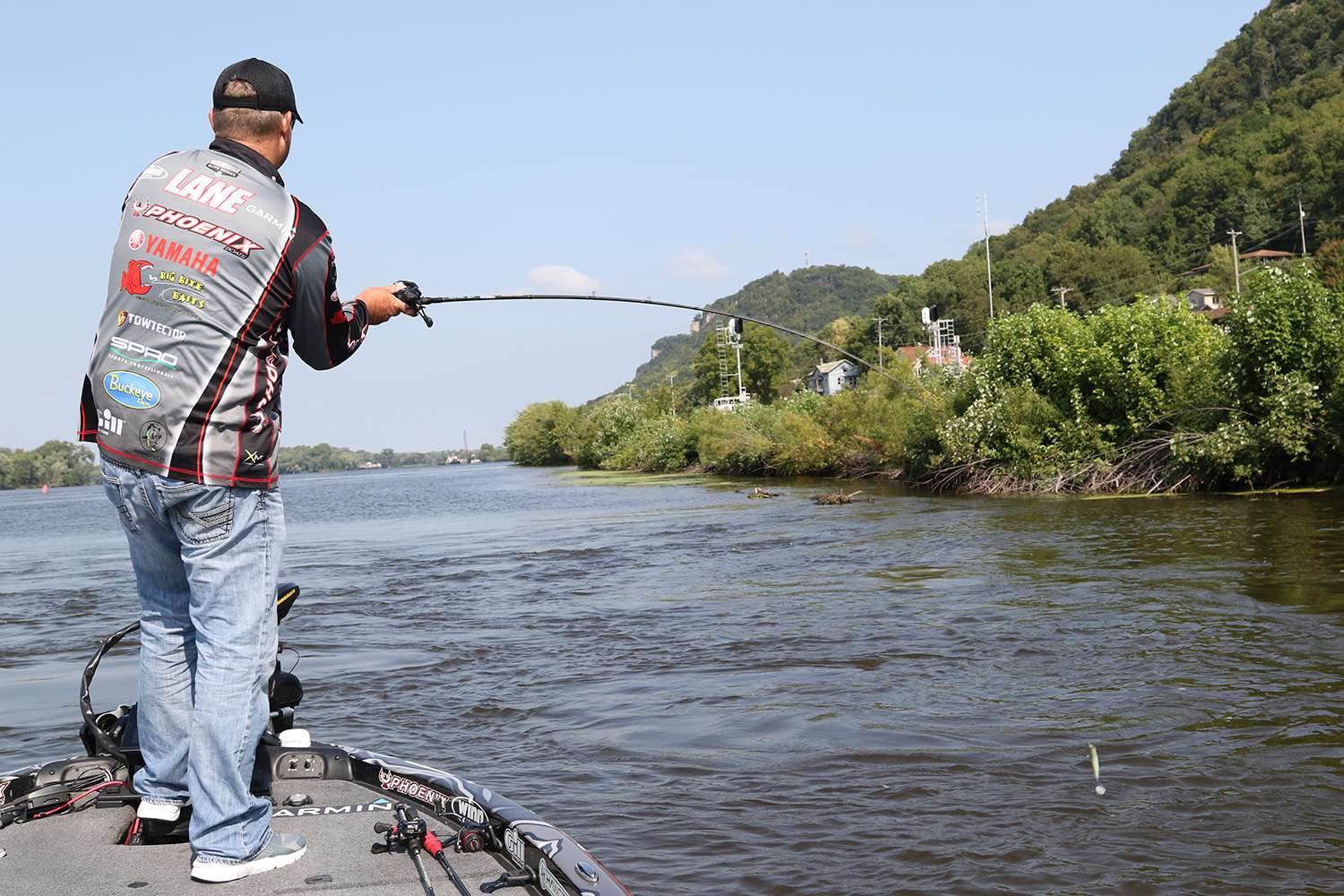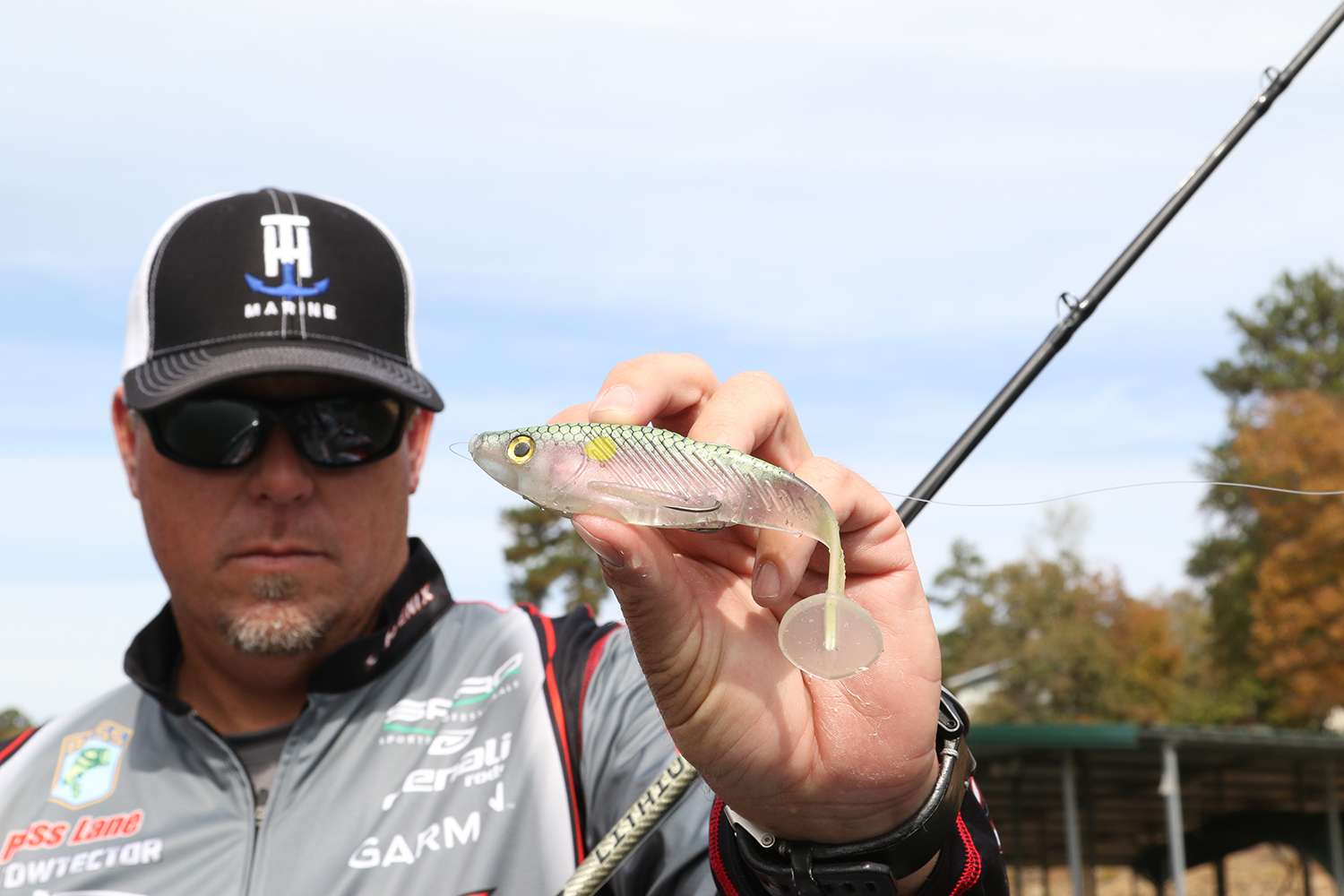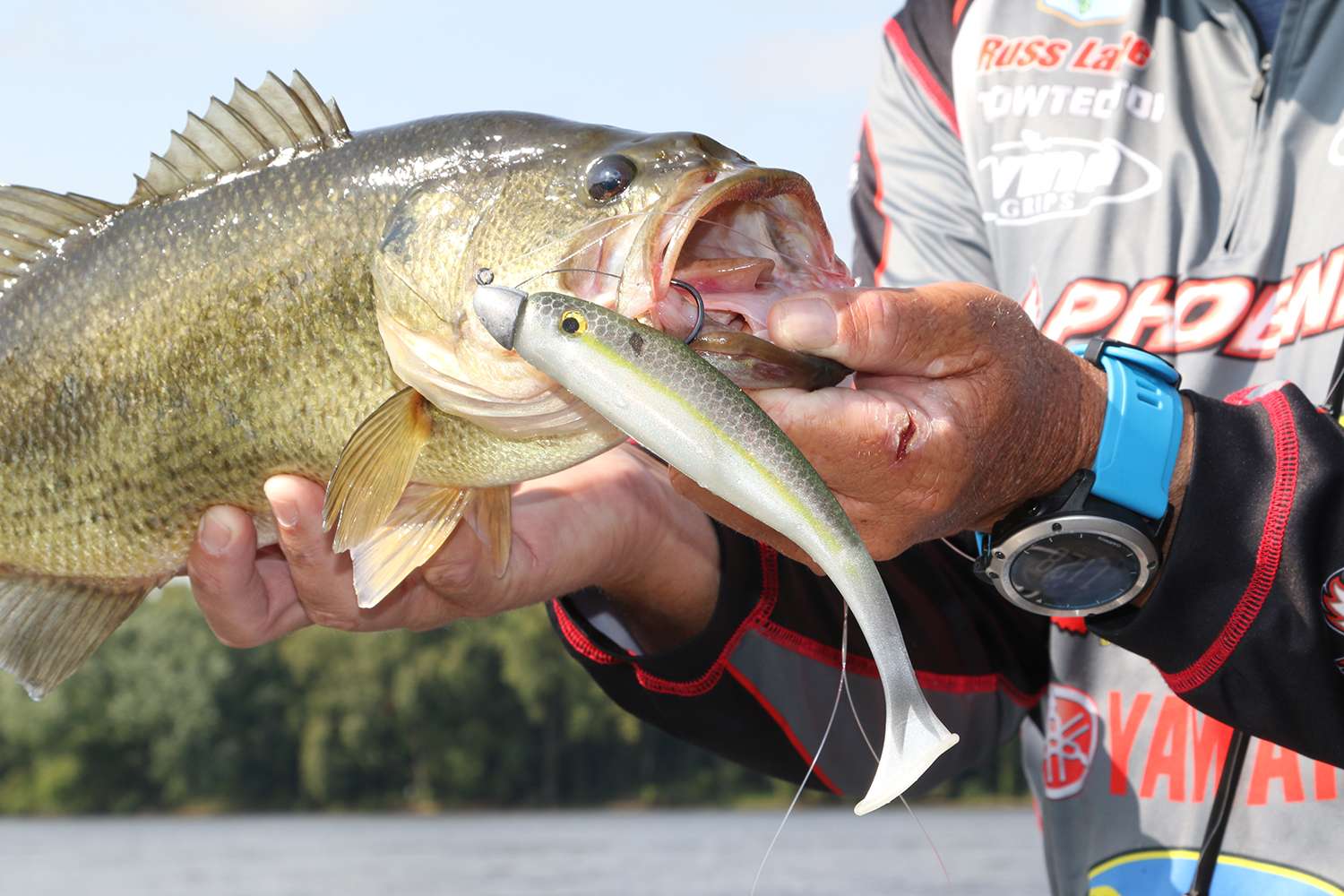
Move over Michael Phelps, there’s another swimming stud that we simply cannot do without.
Sorry Ryan Lochte, not your day.
We’re talking those medium swimbaits in the 4 1/2- to 5-inch size that fit a utilitarian role between the diminutive finesse stuff like the Keitech 3.8 Swing Impact, Gene Larew Sweet Swimmer or a Z-Man DieZel MinnowZ and those lobbing jumbo swimmers in the Optimum Boom Boom, Osprey Talon and Huddleston Trout clan.
Built slender for easy passage through vegetation and fitted with a kicking tail that wiggles even at low speeds, swimbaits like the Berkley Havoc Grass Pig, Reaction Innovations Skinny Dipper, Gambler Big EZ or YUM Pulse offer one of your most versatile options for shallow water habitat.
Let’s look at how Bassmaster Elite pros employ this strategy.

When it’s right
Ask Jason Christie and he’ll tell you there’s an application for medium swimbaits nearly year round.
“There are a couple of boxes that never leave my boat and the YUM Pulse box is one of them,” he said. “They’re really effective in the prespawn, but they’re also good into the summertime when the fish are deep. As long as you have clear to medium water quality so they can see it a long way, these baits will work.”
Noting that the midsize swimmers can play both search bait and targeted presentation roles, Christie said the bait’s natural profile and go-anywhere versatility (depending on rigging) makes it one of his go-tos for pressured waters where fish get wise to crankbaits. As with most reaction baits, a little wind is always welcome.
Favoring the Bass Pro Shops 4.8 Speed Shad, Ott DeFoe says this bait does a good job of imitating the seasonal baitfish size in springtime water temperatures up to about 70 degrees. He’ll keep the 4.8 handy in warmer times, too, but often as a complement to a larger presentation.
“It’s always a juggling act of matching the size of bait you’re using to the quantity vs. quality of the fish you’re targeting,” DeFoe said. “A bigger bait is almost always going to lead to bigger bites, but you can also get to the point that you upsize so much that you don’t get enough bites.”
Top targets
Bed fish: We’re heading out of this seasonality, but when visibility is low, or if he can’t get close enough for sight fishing, Christie peppers likely areas with his Pulse and looks for signs of movement.
“You’ll catch a few fish, but you’re going to see more than you catch,” he said. “Those are areas you can go right back through with a jig or a shaky head and catch those fish. As long as the bait is moving away from the bed, they won’t eat it, but you’ll see them track it, turn around and go back.”
Points: It could be main lake or secondary points with depths ranging from 4 to 20 feet; regardless, DeFoe calls this his top deal for medium swimbaits.
“If I’m not fishing around grass, I’ll rig it on a VMC Mobster jig head,” DeFoe said. “I carry 1/8-ounce heads, but I use 1/4-, 1/2- and 3/8-ounce most. Weights are mostly determined by depth, but I’ll occasionally fish a 1/2-ounce jig head very shallow because I want to fish it very fast. It’s not the norm, but it is sometimes, it really works.”
Shad spawns: Tracing docks and seawalls, winging it under willow trees or bumping along a grass edge, the medium swimbait plays this game well. Christie said he prefers open hook jig heads in open water, but grassy habitat calls for a belly-weighted Trokar wide gap hook.
Ledges: For this summertime pattern, Russ Lane rigs his 4-inch Big Bite Baits BB Kicker or a 5-inch Suicide Shad on a 1/4- to 3/8-ounce Buckeye J-Will weedless swimbait head.
“Late-summer to early fall fish tend to suspend a lot. I think they move up on the tops of those humps and ledges at night to feed and when the sun comes up, they get up off the bottom and suspend over the drops. I’ll count the bait down to the depth I’m seeing the fish and slow roll it back to the boat.
“This is just an efficient way to catch suspended fish. Fifteen or 20 years ago, nobody fished for suspended fish, but now guys go out looking for them because the swimbait is so effective at catching them.”
Wood cover: Over thick brush or standing timber, DeFoe uses a the same jig heads and combines bait discipline with a patient retrieve to prevent snags.
“If you feel your line coming over a branch, if you keep your rod tip up and don’t pull too hard at the wrong time, you can fish it through there and not stay hung up,” he said. “You don’t have to make contact with the brush pile or standing timber to catch a fish, as long as you get it close and just tick the tops.”
Boat docks: “This bait skips really well on a 1/4-ounce jig head and it gives those fish a little different look than a shaky head or a flipping jig,” DeFoe said.

Keep in mind
“This is a visual bait, you don’t want to reel it too slow; you want to keep it above the fish so they can see the bait,” Christie said. “If the fish are 20 feet deep and on the bottom, you don’t want to be dragging bottom; you want it 2 or 3 feet off the bottom.
As for retrieves, DeFoe said simple is best. No need to get fancy with a bait built to do the work for you.
“Most of the time, I just throw it out there and bring it back slow and easy,” he said. “There are times, when the fish are aggressive, when they want to really bring it.”
Lane adds this: “I’ll start off like I’m slow rolling a spinnerbait, just ticking the bottom. The BB Kicker’s tail has a really wide paddle, so it moves a lot of water, even at a slow speed. If they don’t like that, I’ll give it three to four sharp cranks to make the bait shoot up and then fall on a slack line. Sometimes, they like it on the fall.”
Lane throws his swimbait on a 7-2 medium-heavy Denali Covert rod with a 6.3:1 reel carrying 14- to 20-pound Sunline Shooter fluorocarbon (depending on depth and clarity). The gear ratio helps him maintain a slow presentation, while the rod’s softer tip allows the fish to “get” the bait.
“When you feel that bite, your first reaction is to set the hook, but you’re going to miss a lot of fish doing that and the ones you hook, you’ll hook them toward the outside of the mouth, so you’ll lose a lot of them,” Lane said of the proper swimbait bite response. “You have to train yourself to lower your rod, lean into them and start reeling.”






